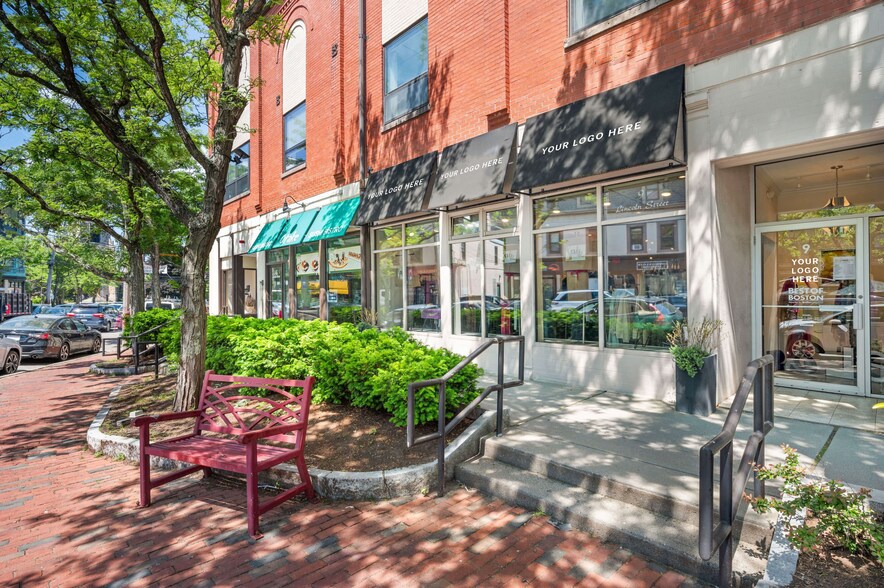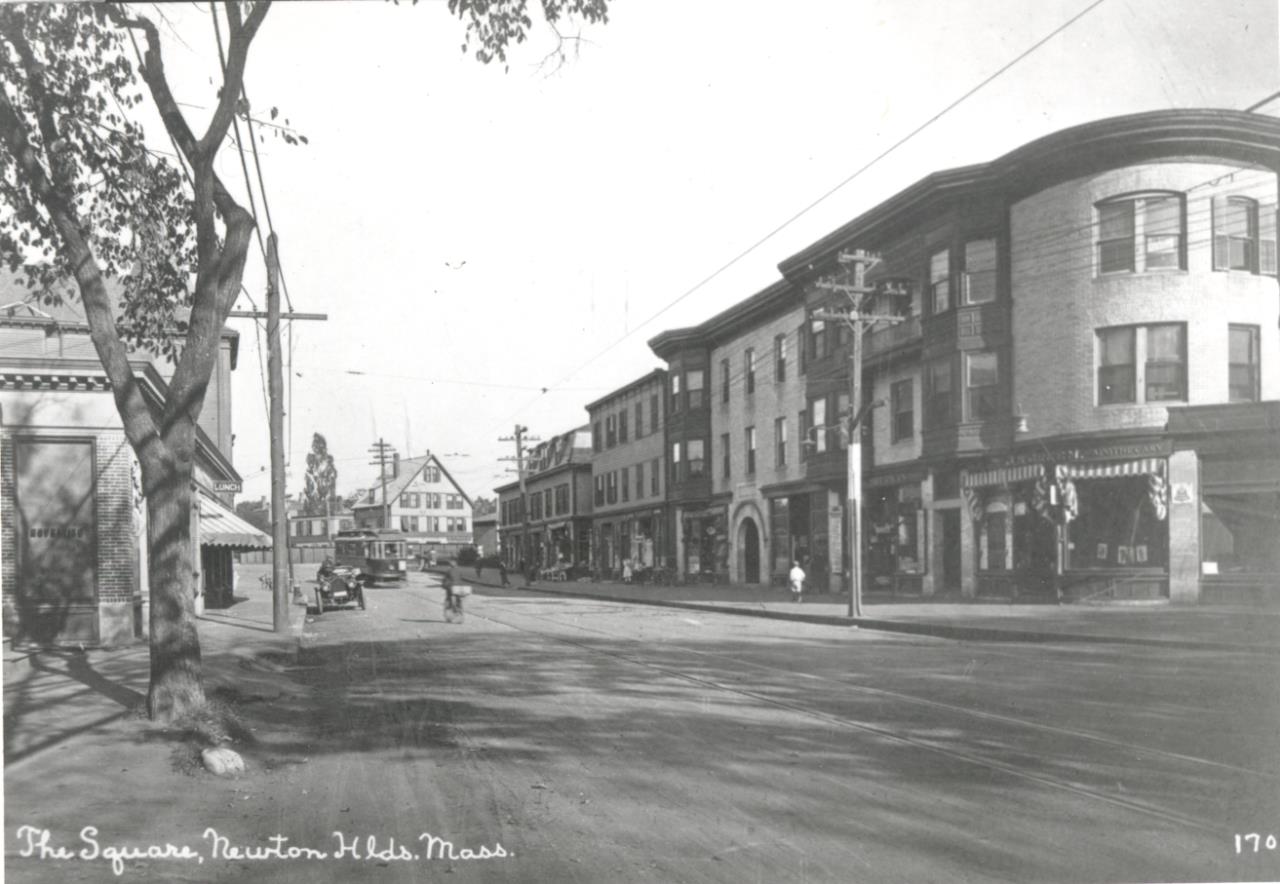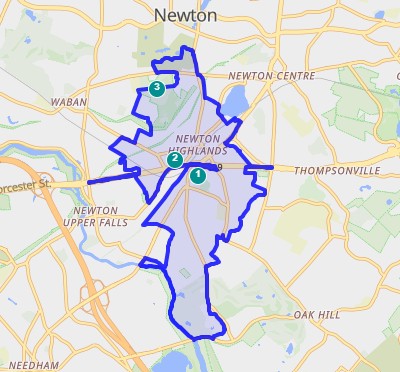
Nestled about 8 miles west of downtown Boston within the city of Newton, Massachusetts in Middlesex County, the village of Newton Highlands is a classic New England suburban neighborhood with its own distinct flavor and history.
A Brief History
Much of present day Newton Highlands was part of a land grant in 1634 to John Haynes, a newly arrived wealthy English landowner. He served as Governor of the Colony the following year, before moving to Connecticut where he died in 1654. The land went to his heirs, and most of it was not sold for two or three generations. Even in Colonial times, settlement in Newton Highlands was slow.
Only two highways served the area in the 18th century: the north-south Dedham Road (now Centre Street), and the east-west Sherborn Road (now Clark, Beacon, Curtis, Ramsdell, and Woodward Streets). Slowly, farms spread out along these highways and Newton Highlands enjoyed a long agricultural period. As late as 1870, fewer than 20 families resided in the area.
After the Charles River Railroad was built through the Highlands in 1852, real estate developers looked for opportunities there, too. Portions of Lincoln, Walnut, Floral, and Hyde Streets were laid out, but few lots sold. The railroad had been built to serve the industries at Newton Upper Falls, and commuter trains ran infrequently, discouraging development. This was especially true during the 1860s when trains operated around the clock transporting gravel for the filling of Boston’s Back Bay, an immense project that lasted more than a decade.
Suburban growth occurred rapidly in the 1870s once the Back Bay landfill project was virtually complete. By 1874, the village was firmly established with 521 new residents who voted that it be named Newton Highlands. This newly accessible village was especially appealing to Boston residents who viewed it as a healthful, rustic environment in which to raise a family. Able to commute daily to employment in the city, a broad cross section of working, middle, and upper class families were attracted to the bustling village.

Today, there are nearly 10,000 residents of Newton Highlands. The heart of the village is the Newton Highlands Historic District, which was listed on the National Register of Historic Places—highlighting both its commercial core and its well-preserved late-19th and early-20th century homes.
Village Character & Lifestyle
Newton Highlands offers a decidedly walkable, village-center feel: tree-lined streets, a compact downtown district along Lincoln Street with local shops, eateries and professional offices, and residential areas featuring beautifully maintained older homes beside some newer construction.
Schools & Community Profile
The neighborhood is served by the Newton public school system and is known for its strong schools.
Demographically, the local averages show a median age around 49 and individual income levels above national norms, underscoring a stable, mature residential base.
Location & Commute
Situated in southern Newton, the ZIP code for Newton Highlands is 02461.
The village benefits from convenient commuter access via the MBTA Green Line D Branch at Newton Highlands station, offering an easy ride into Boston, making it an attractive option for those seeking a suburban home with city access.

Final Thoughts
Newton Highlands strikes a pleasing balance between residential calm and village vitality—where you’ll find classic architecture, a close-knit community vibe, and convenient access to greater Boston. Whether you’re exploring the coffee shops on Lincoln Street, strolling past Victorian homes on quiet side streets, or hopping on the Green Line for a city outing, this village captures an appealing blend of suburban charm and practical connectivity.
Newton Highlands Links
Newton Highlands Neighborhood Council
This content is currently unavailable. Please check back later or contact the site's support team for more information.
